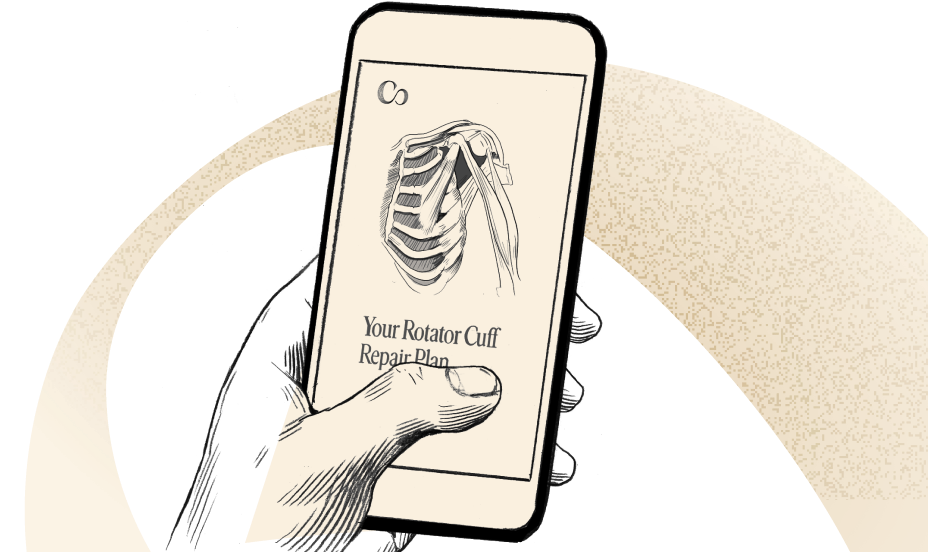Modern Joint Replacement: What to Expect—And Why More Patients Are Choosing Outpatient Surgery Centers

Joint replacement has come a long way. With faster recovery, better outcomes, and a more personalized experience, it’s no surprise that more people are choosing to take action earlier, especially when joint pain starts interfering with everyday life. After all, one of the most common things our surgeons hear from patients after surgery is, “I wish I had done this sooner.”
Today’s joint replacement isn’t a last-ditch effort for pain relief in an old, arthritis-riddled joint. It’s increasingly about giving active people in their 40s, 50s, and 60s the ability to move, live, and enjoy life without limitations.
Whether you’ve already made up your mind or you’re just beginning to explore the possibility of a total joint replacement, it helps to understand why the experience has improved so dramatically in recent years—and what to expect from today’s approach.
Yes, advancements in technology, implants, and surgical techniques have played a big role. But there have also been huge strides in how we care for you before, during, and after surgery. Outpatient surgery centers—like our own Marina Orthopedic and Spine Institute—are now the preferred choice for active adults seeking expert joint care with less disruption.
Picture this: your aching hip is replaced in the morning, you’re up and walking a couple of hours later, back home the same night, and back on the golf course in six weeks—this is the new reality for many patients after a modern joint replacement.
The Evolution of Joint Replacement
Understanding just how far joint replacement has come starts with knowing where it started. Here’s a quick look back at the history of joint replacement surgery—and how it’s evolved into the safer, more effective procedures we rely on today.

The first recorded total joint replacement dates back to 1891, when a German surgeon performed a hip replacement using ivory and metal screws.1 Throughout the early 20th century, surgeons experimented with materials like molded glass, acrylics, and basic metals. But most of these early implants failed due to wear, breakage, or infection.
The real breakthrough came in the early 1960s with the development of the first truly successful hip implant: a stainless steel stem, a plastic cup, and acrylic bone cement. This “low-friction arthroplasty” became the gold standard, forming the blueprint for many modern hip replacements. Around the same time, knee replacement surgery advanced rapidly, culminating in the introduction of the Total Condylar Knee implant in 1974—a major leap forward in durability and function.2
From the 1970s through the early 2000s, implant design and surgical technique both saw major upgrades, ushering in what we know as the modern joint replacement.
The Joint Replacement of Today
The joint replacement experience looks very different than it did just a decade ago. From implants and surgical techniques to pain management and recovery protocols, nearly every aspect has been refined, improving both the surgery itself and the recovery process.
Smarter Surgery
- Durable Implants—Today, most joint replacements use a combination of metal (commonly cobalt chrome or titanium), ceramic, and plastic (polyethylene), delivering reliable, long-term performance.
- Less Invasive Procedures—Techniques like joint resurfacing, partial knee replacement, minimally invasive knee replacement, and the direct anterior and superior approach for hip replacement use smaller incisions and minimize disruption to bones, muscles, and soft tissues, leading to less pain, quicker healing, and a faster return to activity.
- Robotic-Assisted Procedures—Where surgeons once relied solely on anatomical landmarks and manual guides to position implant components, robotic technology has introduced a new level of precision.4 With robotic systems like Mako™ robotic technology, your surgeon uses a CT scan to create a 3D model of your joint and guide the procedure with pinpoint accuracy. This allows for:
- Sub-millimeter precision in implant positioning
- Improved joint function
- Potentially faster, smoother recovery
Smarter Recovery
Just as the joint replacement procedure itself has evolved, so has the recovery process. Today, many leading centers follow an Enhanced Recovery After Surgery (ERAS) approach: a comprehensive, evidence-based protocol that spans the entire surgical journey. ERAS integrates nutrition, pain management, mobility, and patient education to reduce complications, shorten recovery time, and improve long-term outcomes.3 Two of the biggest areas where ERAS has transformed the post-operative patient experience are pain control and rehabilitation.
Modern Pain Control
Pain management after joint replacement has come a long way. Most patients now benefit from a combination of nerve blocks and long-acting local anesthetics, which help keep them comfortable while reducing the need for opioids.
During surgery, ERAS protocols often shift away from general anesthesia in favor of more targeted options like spinal blocks. These techniques reduce grogginess, lower complication risks, and support faster mobilization. After surgery, pain is managed through multimodal strategies—carefully balanced combinations of medications (often called “pain cocktails”) that minimize opioid use while still effectively controlling discomfort.4 These may include local nerve blocks, anti-inflammatories, and non-narcotic analgesics, all tailored to each patient’s needs.
Just as important is early mobility. Not long ago, patients typically spent 3–5 days in the hospital, often confined to bed. We now know that getting up and moving shortly after surgery plays a critical role in easing pain and restoring function during the earliest stages of recovery.
Advanced Rehabilitation
Recovery isn’t one-size-fits-all. Today, joint replacement rehabilitation is a personalized, data-informed process designed to optimize strength, mobility, and long-term function.
Recovery often begins before surgery with prehabilitation programs that help patients build strength, improve flexibility, and set a baseline for post-op progress. After surgery, patients benefit from tailored rehab plans that adjust to their individual recovery timeline, pain levels, and goals. Advanced techniques, aligned with ERAS principles, allow physical therapists to precisely target weaknesses and accelerate healing without overloading sensitive tissues.
Wearable sensors and digital tracking tools are also playing a growing role, offering real-time insights that help patients and providers adjust plans as needed. Just as important as the tools is the approach: personalized, one-on-one care, a focus on restoring natural movement, and close coordination with your care team support better long-term results.
Why More People Are Choosing Joint Replacement Sooner
Joint replacement surgery is smarter, more precise, and more patient-friendly than ever before. It also lasts longer. Emerging evidence suggests that 80-90% of joint replacements will last for a patient’s lifetime. This is in large part due to advances in implants, technology, surgical technique, and rehabilitation.
This also means more younger and active adults are choosing procedures like knee replacement and hip replacement earlier to avoid chronic joint pain and maintain their active lifestyles.
The goal isn’t just pain relief for stiff, achy joints—it’s getting back to doing what you love. Whether it’s hiking, chasing grandkids, or just walking without pain, joint replacement surgery can help you reclaim your freedom of movement.

What Is Outpatient Joint Replacement?
Outpatient (or same-day) joint replacement means you have surgery and return home the same day without an overnight hospital stay. Outpatient procedures typically happen outside of the hospital at an ambulatory surgery center (ASC).
Here’s what sets outpatient joint replacement apart:
- It’s designed for patients who are healthy enough to recover at home with the right support.
- You’ll still receive expert orthopedic care, advanced surgical techniques, and comprehensive follow-up—just in a more efficient and potentially safer setting.
- Outpatient doesn’t mean “less care.” It means more focused, more personalized, and often more comfortable.
Want to know more? Check out our full article on the ASC experience.
Why Patients Love the Outpatient Surgery Experience
Patients who choose ASC surgery often notice the difference immediately: faster check-in and discharge times, personalized attention from a tight-knit team, consistency and communication at every step, and fewer handoffs with greater continuity of care. The efficiency of ASCs also means fewer delays and a more seamless recovery process.
Patients increasingly choose outpatient joint replacement because:
- Home the same day—skip the hospital stay
- Lower risk of complications from hospital exposure
- Dedicated care team and concierge-level support
- More control over your environment and routine
- Faster return to everyday life
Outpatient surgery offers care that fits your life, not the other way around.
The Precision Total Joint Program at Commons
At Commons Clinic, we’ve reimagined the joint replacement experience from start to finish.
- An elite surgical team led by the world’s top joint replacement specialists
- Expertise in precision techniques like robotic-assisted and minimally invasive joint replacement
- Our advanced outpatient center, Marina Orthopedic & Spine Institute (MOSI), is equipped with the latest technology
- Personalized care coordination every step of the way
- Streamlined pre-op, surgery, and recovery support—all tailored to your needs

For more about our precision total joint replacement program, visit commonsclinic.com/service-joints/
What to Expect Before, During, and After Your Joint Replacement at MOSI
Before:
Pre-op education and personalized care planning
Our team takes time to answer all your questions and ensure you feel fully prepared for your procedure. You’ll receive tailored educational materials and have direct access to our surgery center team to help guide you every step of the way.
Coordinated labs and medical clearance
We’ll work with you and your care providers to obtain all necessary medical clearance ahead of surgery. You’ll also receive clear instructions regarding medications, supplements, and dietary guidelines—both before and after your procedure.
During:
State-of-the-art outpatient surgery center
Our outpatient facility, MOSI, was designed by surgeons with every detail in mind—from cutting-edge surgical equipment to a calming, patient-centered environment.
Expert joint surgeons and advanced techniques
Our joint replacement specialists are not only board-certified and fellowship-trained—they’re leaders in minimally invasive and motion-preserving techniques that promote faster recovery and long-term function.
Experienced orthopedic surgical team
With decades of experience in same-day joint replacement, our surgical team is focused on delivering a seamless, safe, and supportive experience.
After:
Same-day return home
You’ll go home the same day as your procedure, with full support from our team to ensure you feel confident, informed, and comfortable.
Tailored recovery plan
You’ll receive detailed post-operative instructions, including pain management guidance, medication plans, and personalized physical therapy exercises to support your recovery.
Ongoing follow-up and support
Your surgical team will stay connected with you after your procedure, checking on your progress, answering questions, and helping you navigate your recovery with confidence.

A new joint creates new possibilities. Why wait?
Today’s joint replacement is safer, smarter, and more personalized than ever. Whether you’re managing chronic pain or looking to stay active for the years ahead, joint replacement could be the right next step.
Book an appointment with one of our total joint specialists to explore your options.
References
- Knight SR, Aujla R, Biswas SP. Total Hip Arthroplasty – over 100 years of operative history. Orthop Rev (Pavia). 2011 Sep 6;3(2):e16. doi: 10.4081/or.2011.e16. Epub 2011 Nov 7. PMID: 22355482; PMCID: PMC3257425.
- Ranawat CS. History of total knee replacement. J South Orthop Assoc. 2002 Winter;11(4):218-26. PMID: 12597066.
- Wainwright, T. W., Gill, M., McDonald, D. A., Middleton, R. G., Reed, M., Sahota, O., … Ljungqvist, O. (2019). Consensus statement for perioperative care in total hip replacement and total knee replacement surgery: Enhanced Recovery After Surgery (ERAS®) Society recommendations. Acta Orthopaedica, 91(1), 3–19. https://doi.org/10.1080/17453674.2019.1683790
- Li JW, Ma YS, Xiao LK. Postoperative Pain Management in Total Knee Arthroplasty. Orthop Surg. 2019 Oct;11(5):755-761. doi: 10.1111/os.12535. PMID: 31663286; PMCID: PMC6819170.
- Marsh M, Newman S. Trends and developments in hip and knee arthroplasty technology. J Rehabil Assist Technol Eng. 2021 Feb 8;8:2055668320952043. doi: 10.1177/2055668320952043. PMID: 33614108; PMCID: PMC7874345.






 (310) 595-1030
(310) 595-1030